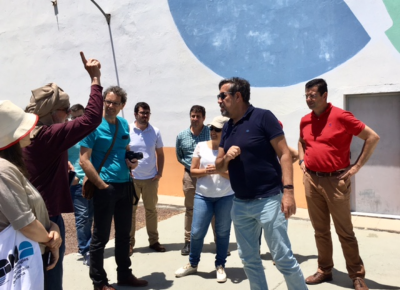Contact
Yeray Hernandez
Main Organisation
Department/Sector/Unit
JRC.E1
Other Organisations
JRC.H1
Description
Our engagement exercise is part of a project on climate change adaptation. It is aimed at applying citizen engagement approaches to climate resilience in local context. Two case studies have already been carried out in local contexts: Tenerife and Gran Canaria Island. The expected result is the development of a Guidance for the implementation of participatory process for climate change adaptation planning.
Participation Spectrum
When and Where
Start Year
2018
Policy Context
Policy Stage
Context of activity
Science or Policy Field
Specific Topic
Climate change adaptation; climate resilience.
Participants
Participants
100
Who was involved
Other participants
How were the Participants selected?
Through what means citizens knew about the call for participation?
E-mail
Methodologies
Events
5
Methodologies used
Tools Used
Spaces Used
Impact
Main Outcomes and Lasting Achievement
In Tenerife's case study, the outcome was a manifesto written by citizens and scientists, demonstrating that when decision-makers do not make decision, citizens usually take over the process. In the Gran Canaria's case, participants of the are currently writing a report to be adopted by Mayors.
How were the outcome taken up within the process they were carried out?
In the case of Tenerife, the outcome were and will not be adopted. In the case of Gran Canaria, the Island Council will assume the joint report within its Climate Change Adaptation Strategy.
Feedback provided
Other Feedback
Questionnaire to assess the engagement process
Assessment
Main Challenges
Reason for such challenges and solutions
It's difficult to engage all citizens and social actors interested/affected by climate change adaptation. We identified also that there is a gap between the outcomes of the engagement process and what policy makers will able to implement. We still do not know how to manage both issues.
Lessons Learn
In my opinion there are two lessons learnt: first, people tend to (re)act emotions instead of rationality; second, there is a gap between what can potentially be done in terms of science and what is actually done by decision-makers. This gap needs explanation from a social science point of view.
Recommendation
According to a questionnaire we have run to the community, they ask for results visibility and make sure the actions proposed are implemented, since many times the participants uses their working time (or free time) to attend participatory processes.
